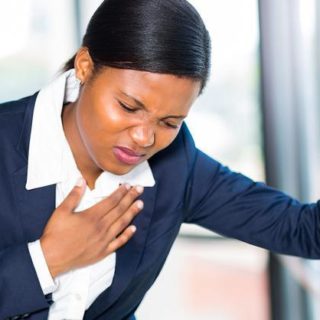Heart Attack Symptoms: Know the Gender Differences
If you were experiencing a heart attack, you’d get help immediately, right? Unfortunately, many people with heart attack symptoms wait more than two hours to seek help, according to the National Institutes of Health. Some people may fear embarrassment if they’re rushed with sirens to the ER only to find that it’s a false alarm. Others may be deniers: “I can’t be having a heart attack.”
For your own health and safety, it’s worth knowing the symptoms of a heart attack – and in particular the differences between what women and men experience – so that you can get treatment for yourself or your loved one as quickly as possible.
Heart Attack Symptoms for Men
According to Nikita Gill, MD, a cardiology hospitalist at Mercy Medical Center Redding, men are more likely to experience severe chest pain than women are. However, a small percentage of men have no chest pain, and some diabetics may not feel any pain at all during a heart attack.
While chest pain is the most common and recognizable symptom, it’s not the only one that men experience. According to Dr. Gill, men can experience shortness of breath, a heartburn like feeling, nausea, sweating, or light-headedness. Although pain in the left arm is a well-known symptom, pain in the right arm, neck, stomach, or back can also signal a heart attack.
Key Differences for Women
Dr. Gill explains that women often experience a different set of symptoms when they have a heart attack. Women often don’t experience the intense pain in one arm and extreme chest pain that men see, although these symptoms do occur occasionally. Heart attack symptoms in women usually take different forms.
Women often experience pain in their neck, jaw, and back. Although men may experience these symptoms too, they are much more present in women. Stomach pain is another symptom, although it may feel like the flu or heartburn.
Dr. Gill states that women may also experience nausea and light-headedness during a heart attack. Shortness of breath may occur, even for women who haven’t exerted themselves physically. Women may also experience a nervous sweat or may feel exhausted or fatigued, even if they’re well rested.
Women may still experience chest pain during a heart attack, but it will generally not be to the same extreme that men feel on their left side, according to Dr. Gill. Instead of extreme tightness, women may feel squeezing anywhere in the chest.
Menopause Is Another Link
Age presents another important heart issue for women. About 10 years after the onset of menopause, there appears to be an increase in heart attacks in women. Researchers for the American Heart Association believe this increase may be tied to hormonal changes in the woman’s body linked to menopausal changes: increases in blood pressure and fats in the blood, an increase in LDL (bad cholesterol), and a decrease in HDL (good cholesterol).
Don’t Hesitate to Call 911
You don’t want to ignore symptoms and fail to seek medical help because of not knowing the signs of such a serious condition as a heart attack. Pay attention to the common indicators, particularly the less obvious ones for women, and know that there are many more than just chest pain. By being aware and proactive, you can save your own life or the life of someone close to you. If you or someone you know is experiencing the aforementioned symptoms, seek care immediately.

